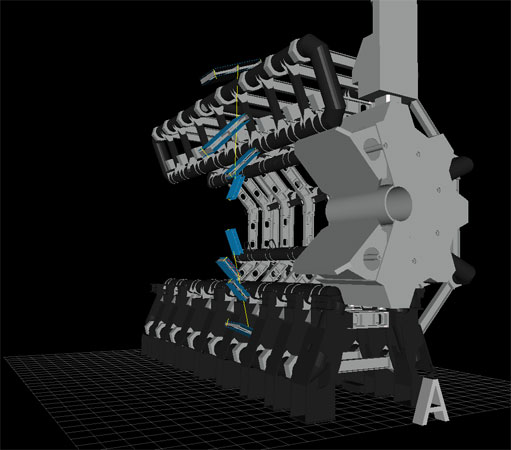
ATLAS e-News
23 February 2011
Measuring space-muons
2 June 2008

The muon corner of the control room
Last week, the ATLAS muon group turned on all its installed detectors for the P5 run, watching tracks run through nearly the whole system. “At the final test before the beam, you use real particles,” says Sotiris Vlachos, run coordinator for the muon system. “For the moment it’s only cosmic rays. Fortunately, they come all the time.”
Trial runs like this help the muon group “keep things warm”. A system that is meant to run nearly continuously for months needs to test for more than a few hours at a time. Also, due to installation activity in the cavern which occasionally damages parts of the muon system, these practice runs help to track down problems and fix them while the hardware is still accessible.
“Many things get dirty,” says Sotiris. To keep the detector tidy, a team of four technicians roams systematically and cleans the detector on a continuous basis, starting at the top and working their way down. Metal dust is the most troublesome form of dirt. “You can understand if metal dust has fallen on an electronic piece, it doesn’t work,” Sotiris explains. Problems have often been solved with a bit of careful vacuuming, even when the dust isn’t visible.
Several times muon collaborators have tracked down problems in the cavern to find their cables sliced. The design of ATLAS allows its parts to be moved around, providing access to inner components if necessary, and many cables are mounted flexibly. In one unfortunate occasion, while difficulties were encountered moving a detector, cables powering one side of the muon detector were accidentally cut.
Another source of trouble is the fragile optical fibres. If bent beyond a certain radius, the fibres snap inside their coating. The fibre looks intact from the outside, but the breakage prevents transmission of data. During installation and commissioning, fibres may easily be broken and must be replaced. Frequent testing allows the muon commissioners to attack problems as they arise.
However, runs like P5 test more than just hardware. “We exercise not only the detector, the online electronics, and whatever goes on in the pit. We exercise all the chain up to the physicists, the final users,” says Sotiris. Once the tracks appear in the muon system, physicists around the world set about reconstructing the particle’s path through the detector.

Reconstruction of a real cosmic ray passing through eight pieces of the muon system
Full subsystem runs like this one are rewarding to those who built the detectors, some of whom have spent over ten years on the project. “So many people were happy because they saw their own baby working,” Sotiris says, recalling the first full muon run in the second week of April.
The excitement was alive and well last week since even more detectors have been installed. The control room became standing-room-only when 50 physicists from the muon system colonized other sections, the unlucky working with their laptops on the floor or on the air conditioner.

|